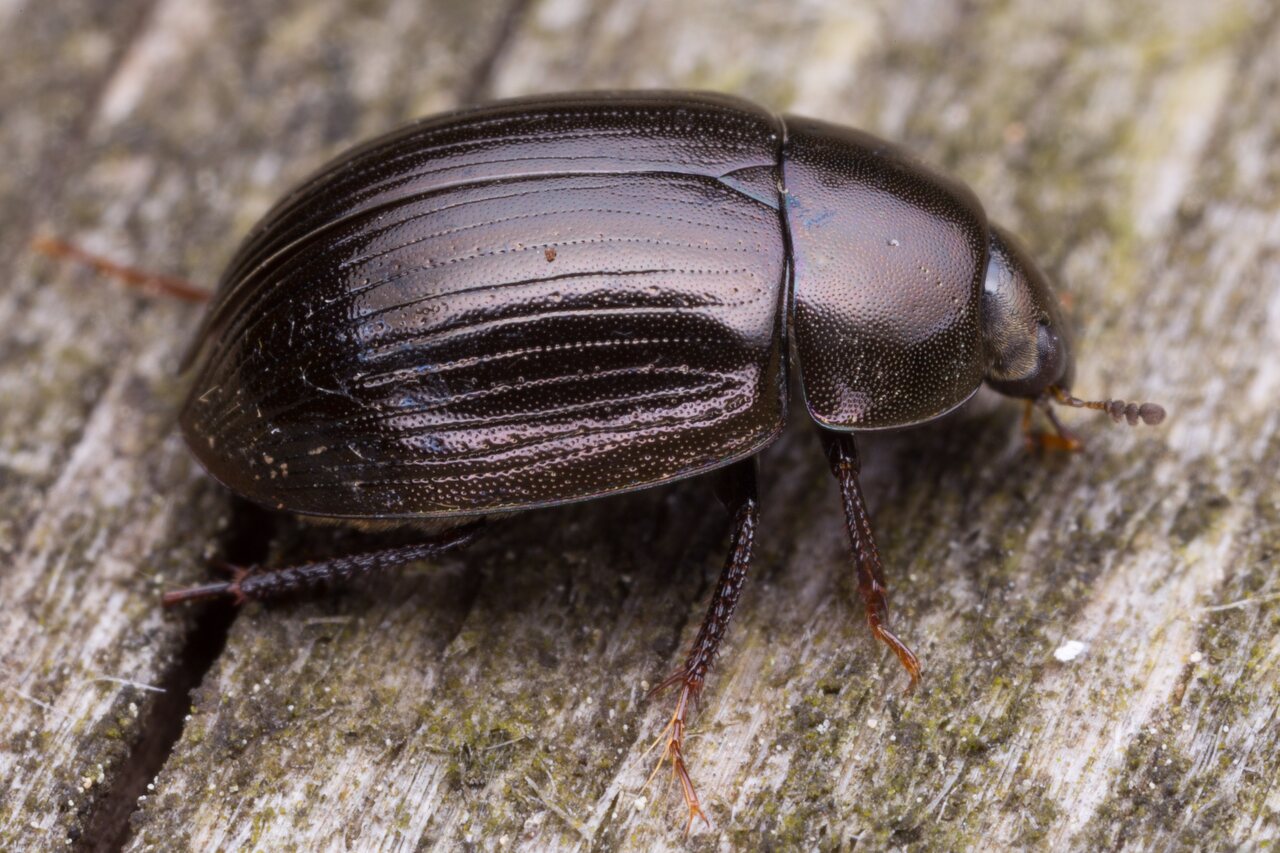
Hydrobius fuscipes · įvairiaspalvis kūdravabalis
- Braunfüßiger Wasserkäfer
- Uurrevesiäinen
- įvairiaspalvis kūdravabalis
- roodpootwaterkever, roodpootwatertor, roodpootwaterkevertje
- wywłoka rdzawonoga
The species inhabits both fresh and brackish water, preferring to live in small and sunlit pools and ponds with plenty of marginal vegetation, and will often occur in temporary pools. Adults appear during the first warm days of spring, they fly well and come to light, often far from suitable habitat, and will alight on reflective surfaces e.g. car bodywork. They occur year-round with the peak of abundance from July to September, during the winter they often turn up in samples of marginal vegetation, leaf litter and tussocks etc. Adults swim with alternate movements of the legs and replenish their air by surfacing head-first. Mating occurs in the spring and females oviposit and construct egg cocoons which are attached to marginal plants. The larvae appear in May and June about a week after oviposition and soon begin feeding upon small invertebrates etc. when larger they hunt aquatic prey and drag it out of the water for consumption. Pupation occurs from mid-June and new generation adults emerge from July onwards creating a peak of abundance as they add to the previous generation adults.
‥
0 comments
Add a comment